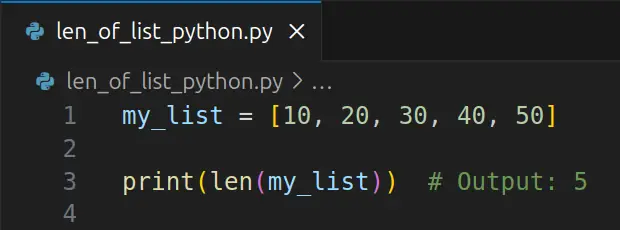Python makes working with lists incredibly easy, especially when it comes to finding out how many elements a list has. If you’re searching for len of list python, you’re in the right place. Whether you’re new to programming or brushing up on your skills, knowing how to find the length of a list in Python is essential.
In this guide, we explore everything you need to know about using len() to work with lists and arrays in Python.

Table of Contents
- What is len() in Python?
- How to Use Len of List Python to Find the Length of a List
- Why Knowing the Length of a List Matters in Python
- Len of List Python vs Getting the Length of an Array
- Checking If a List is Empty Using Len of List Python
- FAQs About Len of List Python and List Length
- Conclusion: Mastering Len of List Python for Lists and Arrays
What is len() in Python?
The len() function in Python is a built-in tool that returns the number of items in an object. It works with many data types, including lists, strings, tuples, dictionaries, and more.
When you use len() on a list, it will tell you exactly how many elements are inside.
Here’s a quick example:
my_list = [10, 20, 30, 40, 50]
print(len(my_list)) # Output: 5In the example above, len(my_list) returns 5 because there are five elements in the array my_list.
How to Use Len of List Python to Find the Length of a List
To find the length of a list in Python, all you need to do is pass the list into the len() function.
shopping_list = ['apples', 'bananas', 'oranges', 'milk']
length = len(shopping_list)
print(f"My shopping list has {length} items.")Output:
My shopping list has 4 items.
The syntax is straightforward:
- Type
len(followed by your list name and a closing). - It returns an integer representing the list’s size.
Using len of list python is the most efficient way to check how many elements you have without writing additional loops or conditions.
Why Knowing the Length of a List Matters in Python
Understanding the length of a list is crucial for:
- Looping through lists
- Validating input
- Checking if a list is empty
- Slicing lists correctly
- Optimizing performance in your code
Many real-world Python programs rely on checking the python length of a list before performing operations. Mastering len of list python techniques helps you write cleaner and more efficient programs.
Len of List Python vs Getting the Length of an Array
In Python, the term “array” can mean a few different things:
- If you are using plain lists,
len()works exactly the same way. - If you are working with arrays from libraries like NumPy,
len()still returns the size of the first dimension (number of rows, for example).
Example with a NumPy array:
import numpy as np
arr = np.array([[1, 2, 3], [4, 5, 6]])
print(len(arr)) # Output: 2Quick Tip: If you want to know total elements in a multidimensional array, use .size instead:
print(arr.size) # Output: 6When you need to in python get length of array, remember that len() gives you just the first dimension, while .size gives you all elements.
Checking If a List is Empty Using Len of List Python
Another practical use of len of list python is to check if a list is empty:
empty_list = []
if len(empty_list) == 0:
print("The list is empty.")
else:
print("The list has items.")However, Pythonic style prefers:
if not empty_list:
print("The list is empty.")Both ways are valid — use whichever feels clearer for your situation. Len list checking is quick and very readable for simple conditions.
FAQs About Len of List Python and List Length
What is Len of List Python?
“Len of list python” refers to using Python’s built-in len() function to find the number of items contained in a list. It is a simple and essential operation for anyone working with Python.
How do you find the length of a list in Python?
Use the built-in len() function and pass the list as an argument.
Example: len(my_list)
What is the difference between len() and size()?
len()is built into Python and works with basic types like lists, strings, and tuples..sizeis used with NumPy arrays to get the total number of elements.
Can len() be used on arrays in Python?
Yes! You can use len() on:
- Regular Python lists (which act like arrays)
- NumPy arrays (but it only returns the size of the first dimension)
What if I want the number of elements across all dimensions?
For multidimensional arrays, use .size if you are working with NumPy.
Conclusion: Mastering Len of List Python for Lists and Arrays
Finding the length of a list (or an array) in Python is quick and easy with the len() function. Whether you’re looping through a list, checking for emptiness, or working with large datasets, mastering len of list python is a simple but powerful skill every Python developer should have.
Next time you’re wondering about the python length of a list, just remember: a simple len(list_name) does the trick!
If you found this guide on using len of list python helpful, be sure to check out more Python programming tutorials in our Python Programming category. Whether you’re just starting with Python or looking to expand your knowledge, you’ll find articles on essential concepts, advanced techniques, and practical coding tips that will help you master Python. Happy coding!
